Statues of a serene Buddha with closed eyes and a slight smile on his lips lend Sri Lanka a peaceful and meditative air, but there is also cacophony and disruption.
When the people of Sri Lanka communicate, they wobble their heads in the charming way of South Asians. The side-to-side shake can mean yes, I agree, or maybe. It can even be a polite way of saying no. It all depends on the context.
When they speak the Sinhala language, the words roll over their tongues like water babbling over stones in a creek. I find it hard to discern where one word ends and the next begins and to find any intonation. Their written language is just as gentle, round and pleasant, with beautiful curvy, swirly letters.
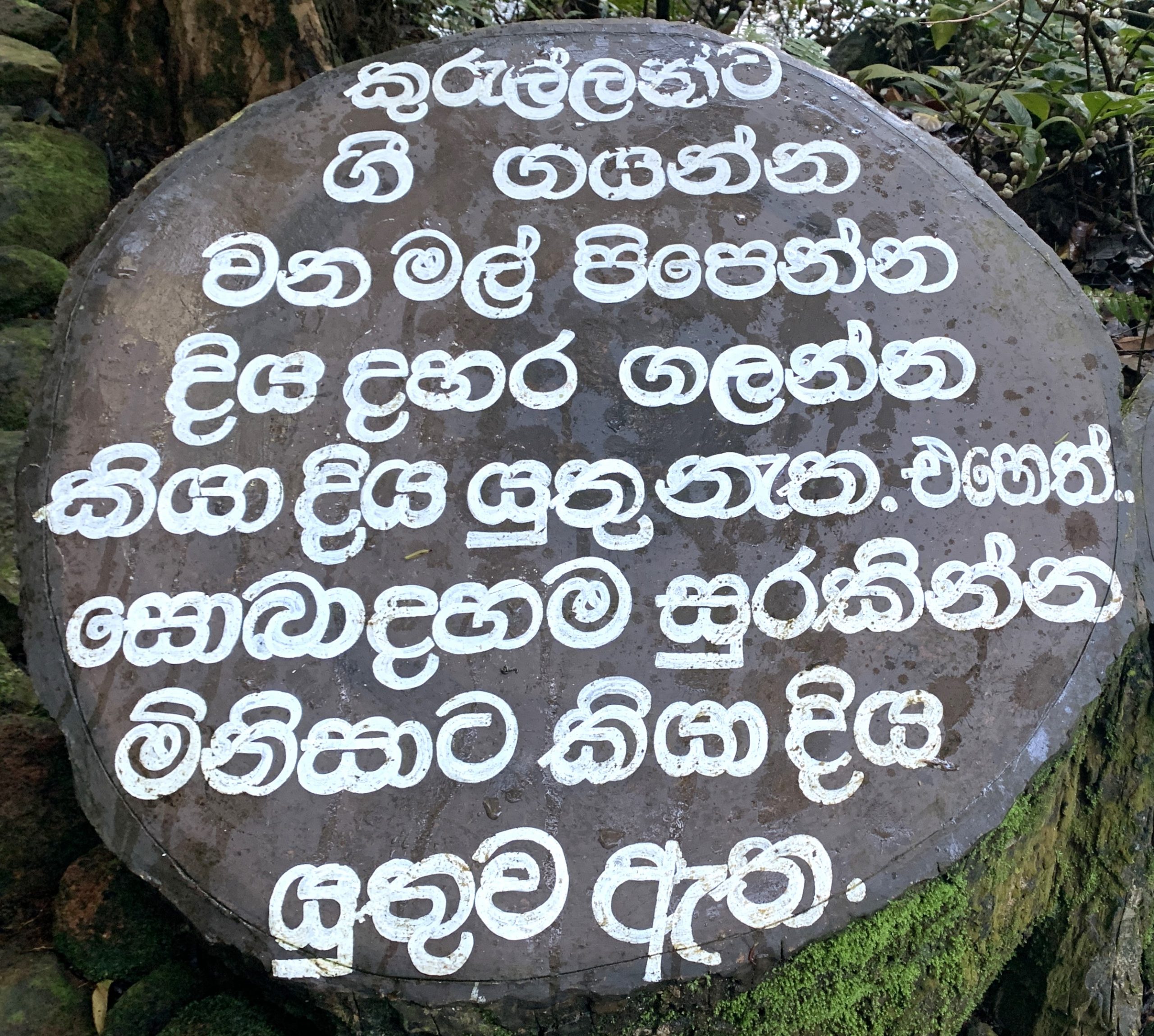
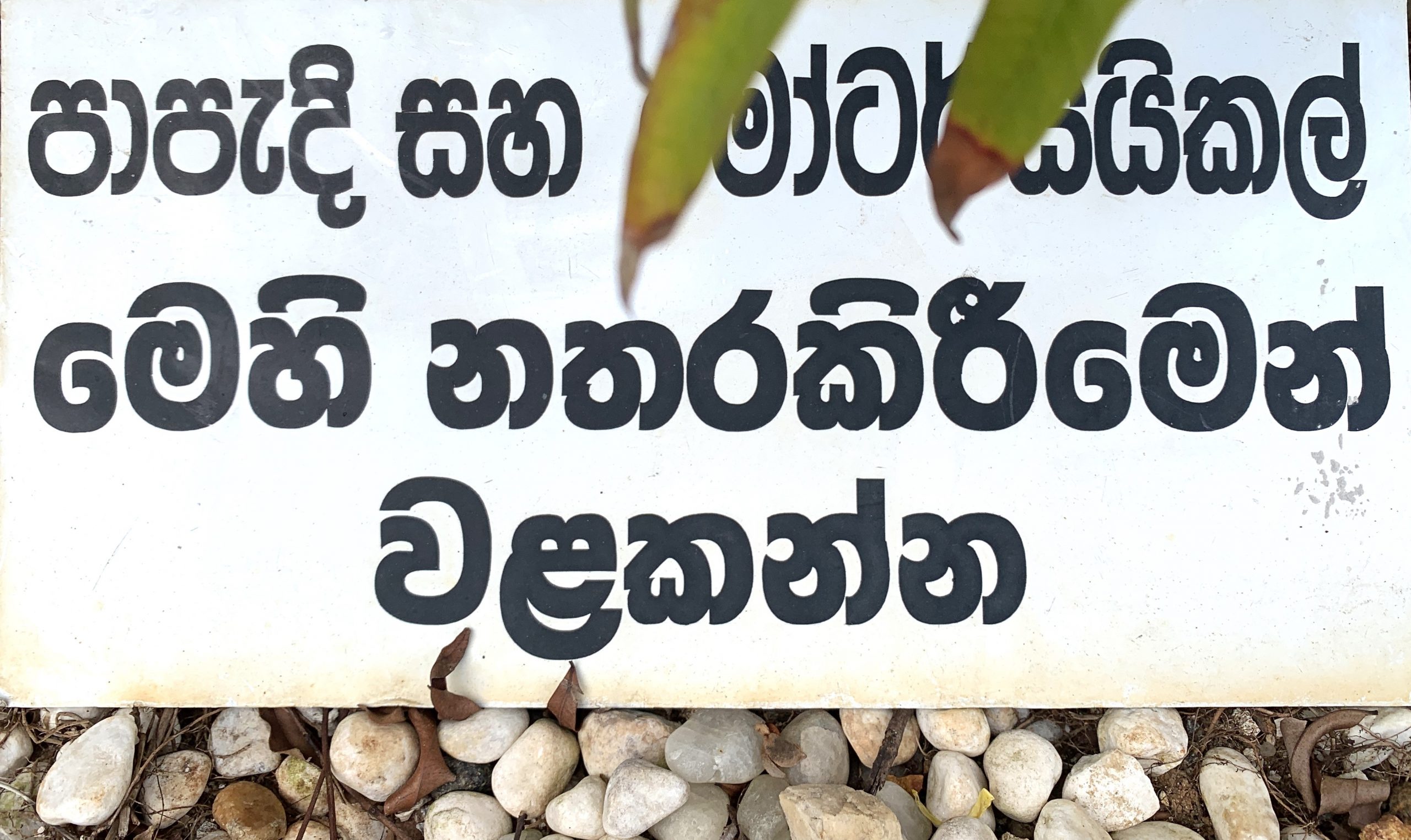
In general, all the people we meet are incredibly smiling and friendly, and very grateful to see tourists returning. Tourism is one of the country’s major sources of income but has suffered greatly due to a 26-year long civil war that ended in 2009, followed by Islamist terrorist attacks on hotels and churches in 2019, the global COVID19 epidemic in 2020 and an economic meltdown in 2022.
When I meet these kind and gentle people it is so hard to imagine them engaging in a civil war. The ways of Man are hard to understand. Maybe that is why so many people resort to religion to find explanations.
Religion plays an important role in Sri Lanka. There are Buddhist and Hindu temples and statues scattered all over the place and a smattering of mosques and churches. Here is a Buddhist temple in the middle of the Madu River, a couple of huge Buddha statues in two different locations, and an ornate Buddhist temple where Buddha’s tooth is supposedly kept (sadly, also elephant tusks).
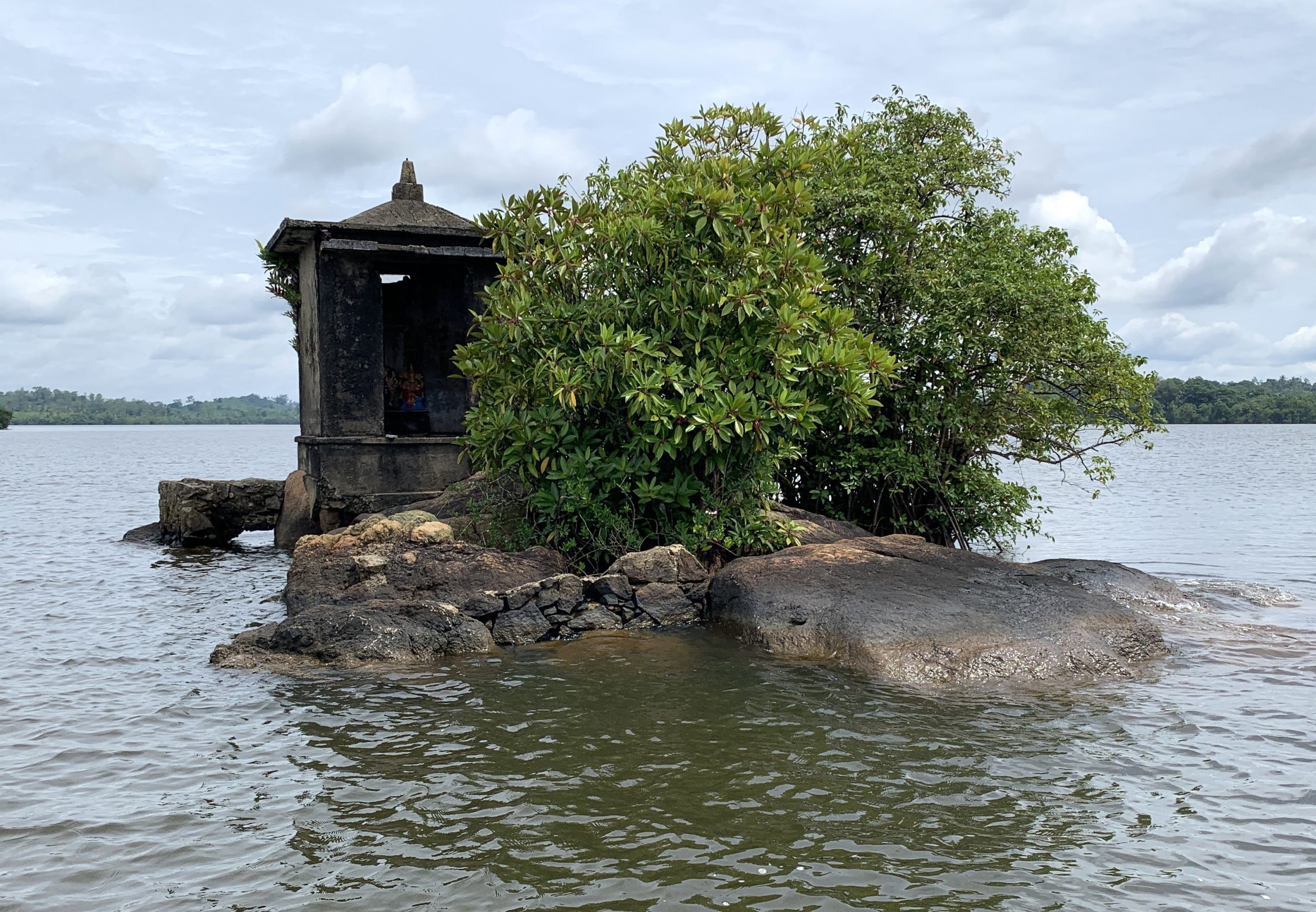
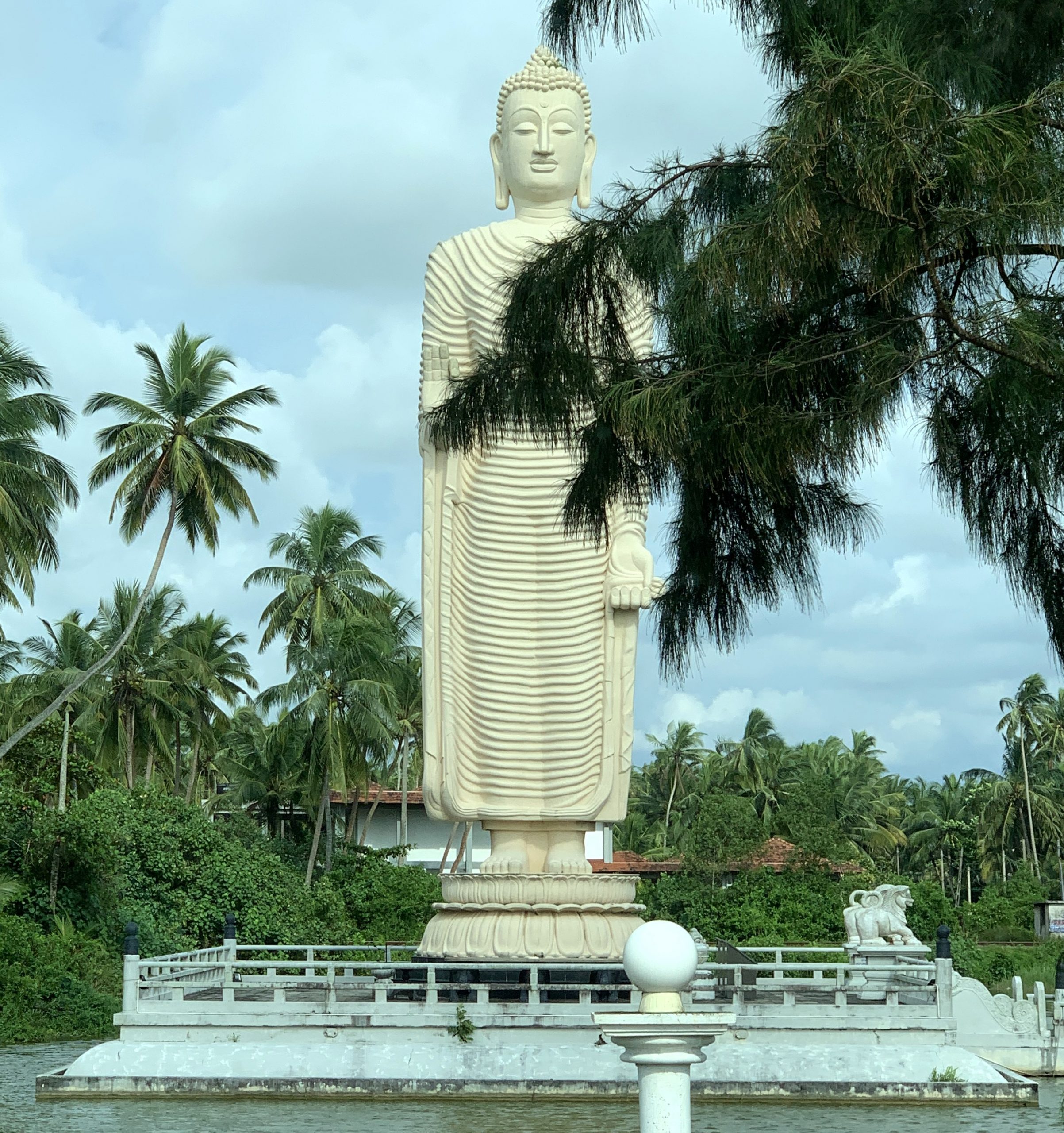
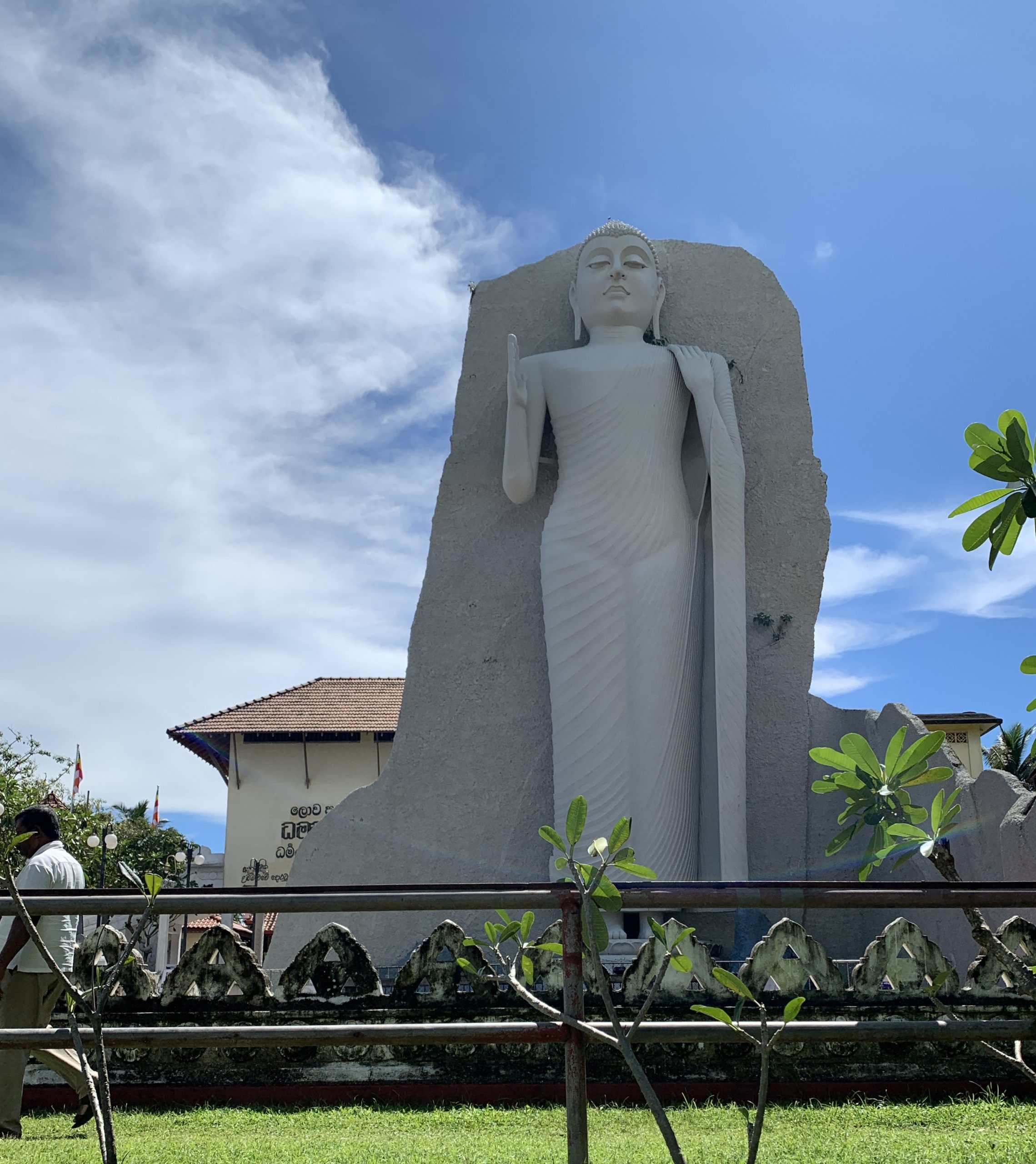
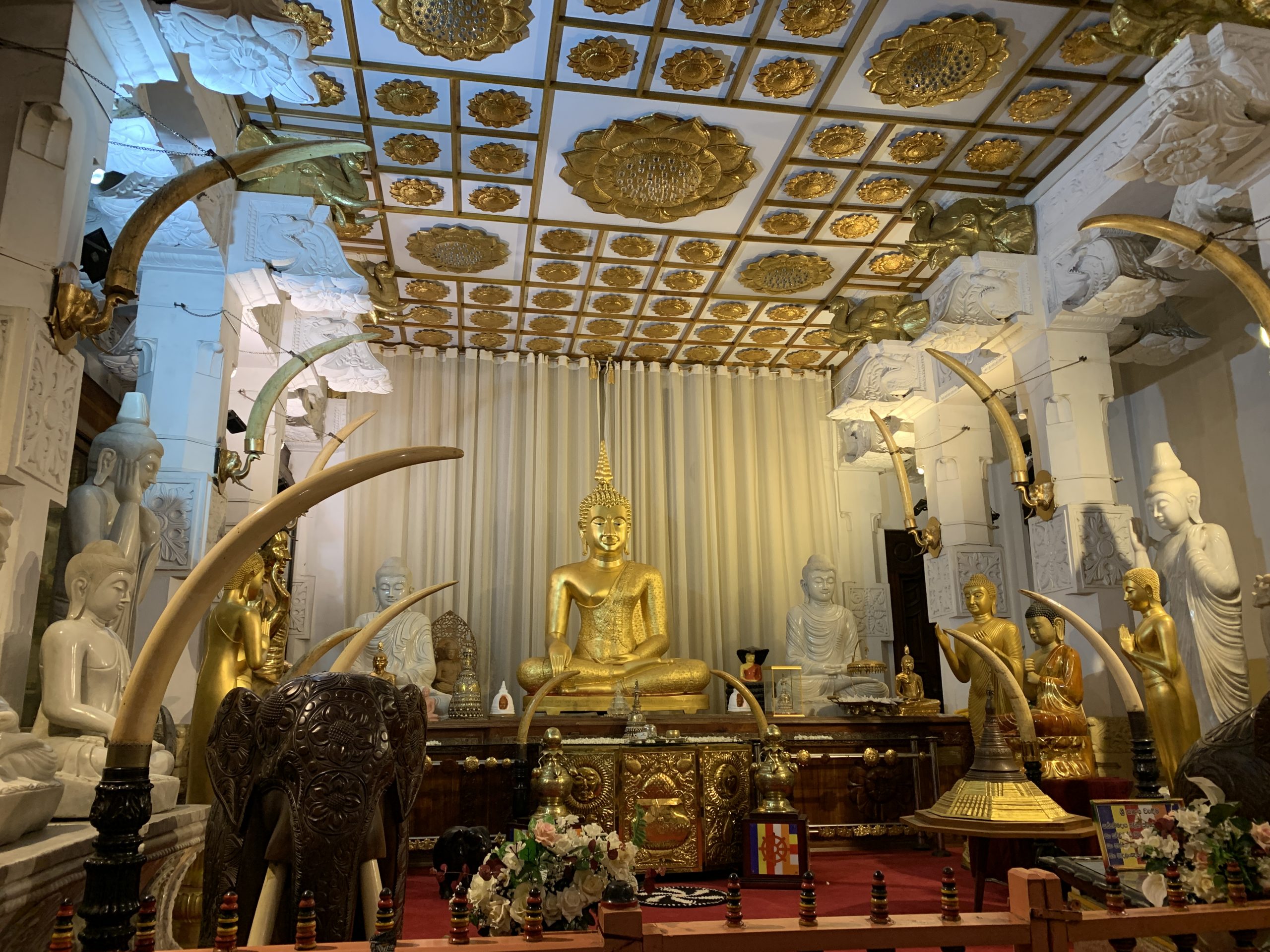
The following photos show a Hindu temple located right beside a forest. It honours the story of a prince from Sri Lanka who kidnapped an Indian princess, after which the princess’ father sent an army of monkeys to rescue her. Maybe the live monkeys we see at the temple are their descendants.
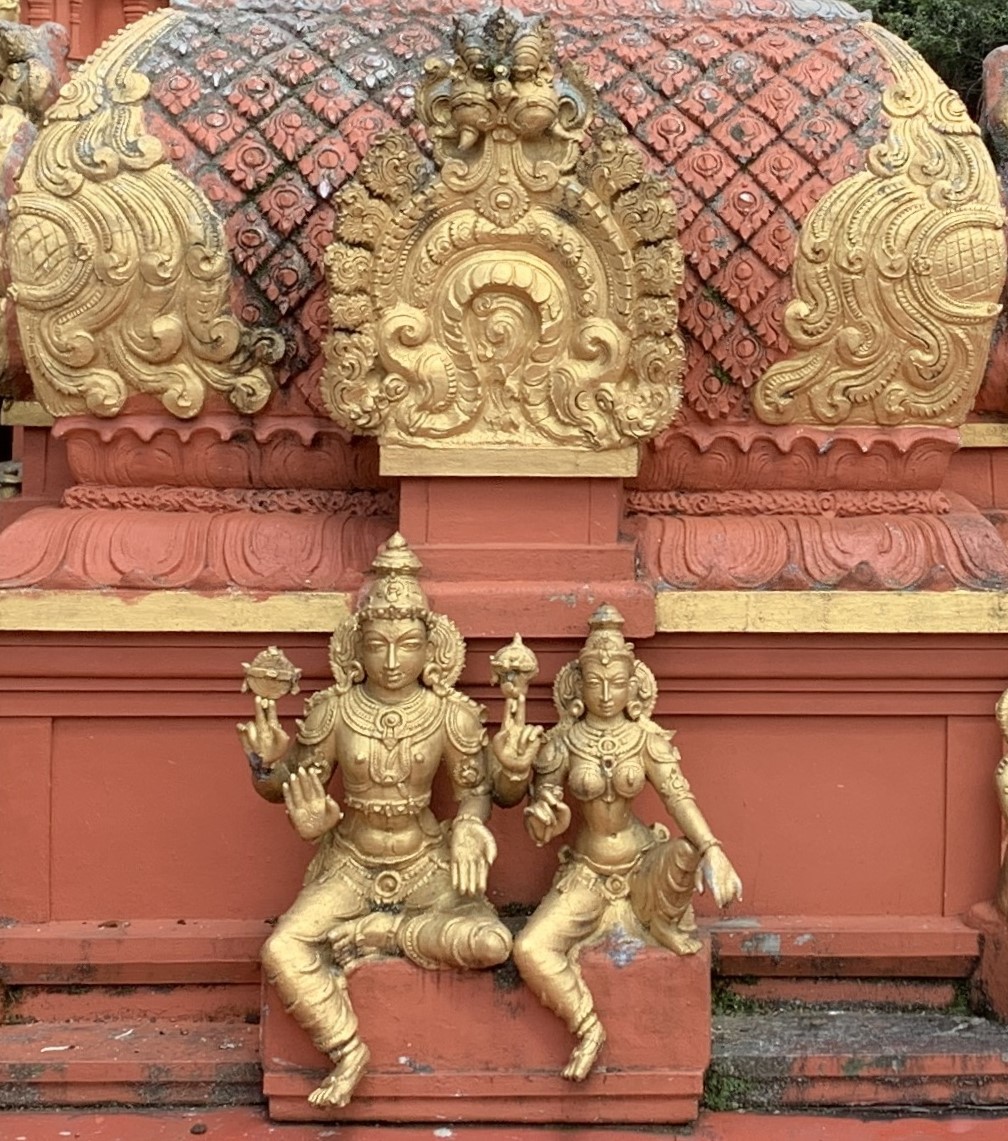
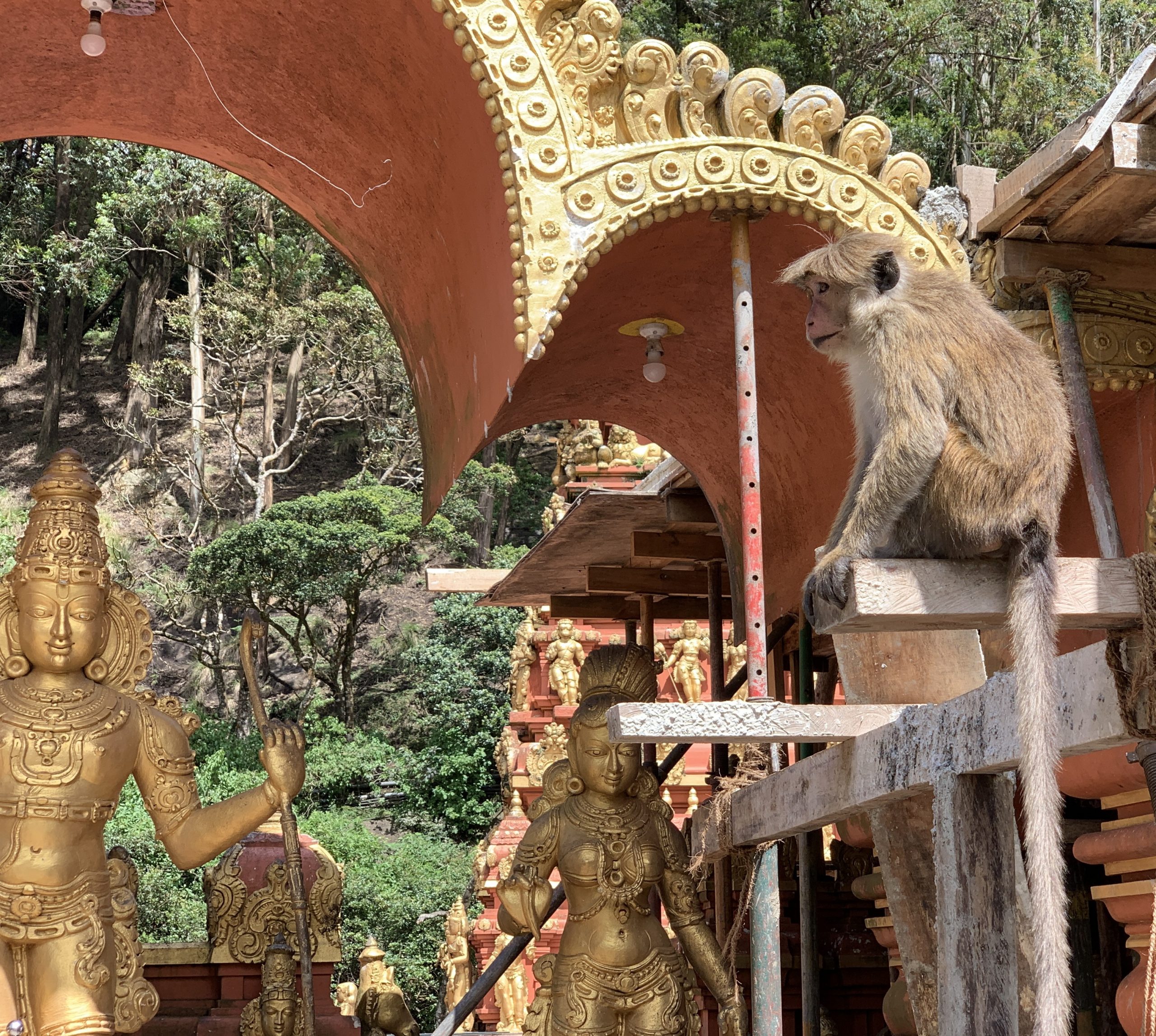
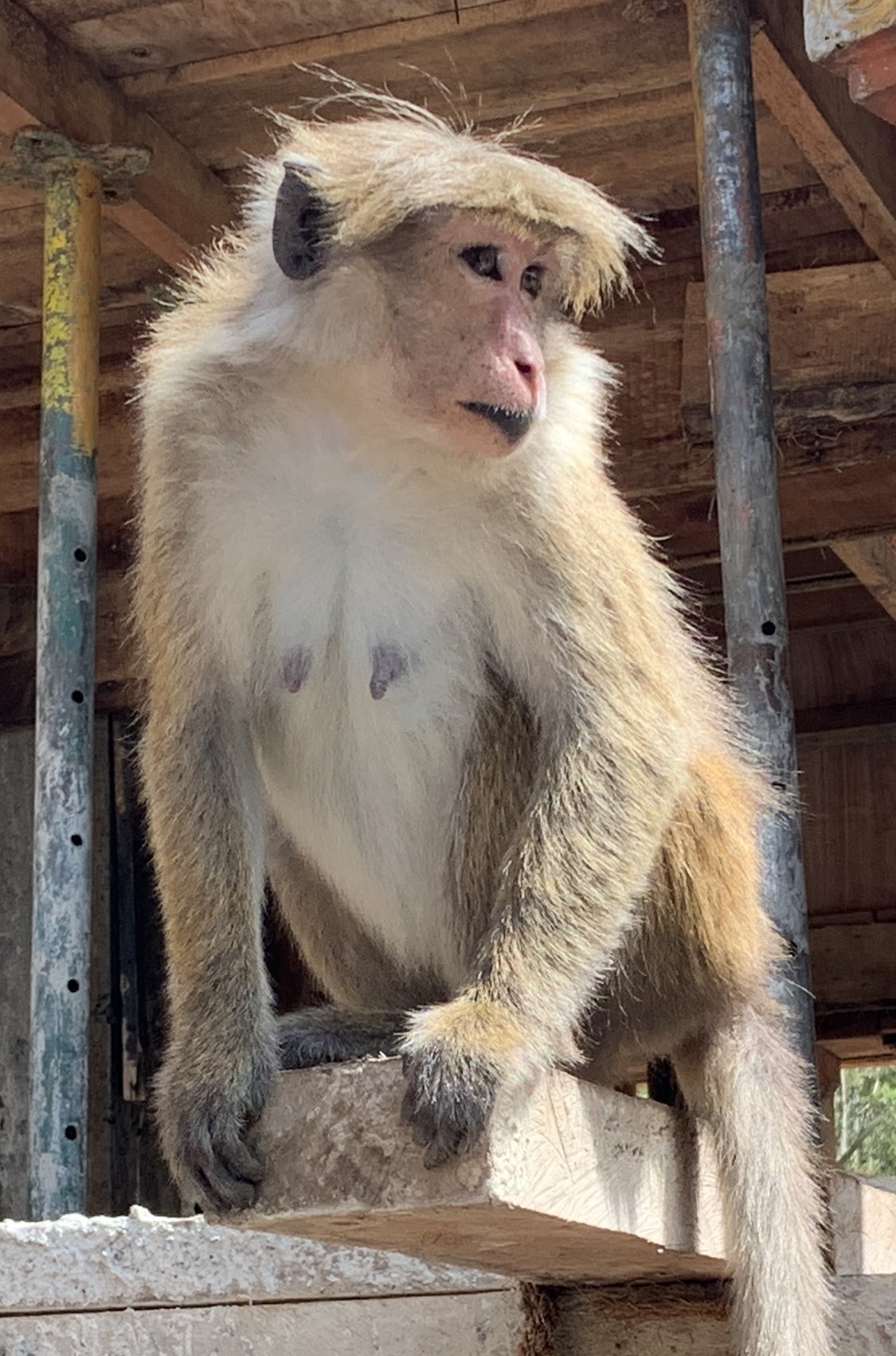

I find the statues of Buddha, sitting with his eyes closed and perhaps meditating, infinitely more restful and peaceful to look at than depictions of Jesus hanging on a cross, blood dripping from wounds on various parts of his body. However, Buddhism is anything but quiet. When there are ceremonies and processions, bells, drums and chanting combine to create cacophonic and deafening noise levels.
Not my thing at all! Unfortunately, elephants are forced to play a role in the processions. They are decorated in silk and lights and made to walk through the streets in honour of Buddha’s tooth. Fine with me if people want to pay homage to a piece of denture but leave the elephants out of it!
As if that is not enough, in between processions, instead of hanging out in a grassy enclosure and enjoying some leisurely downtime, the elephants earn money for their keepers by attracting tourist money, as we were witness to.
As you can see in the photo, the elephant stands chained by one foot in a park. Tourists are given the opportunity to pet it and to put a bunch of bananas in its mouth – for a small fee, of course. I think it is a disgusting practice and refuse to be a part of it, even though I am very curious about what elephant skin feels like.
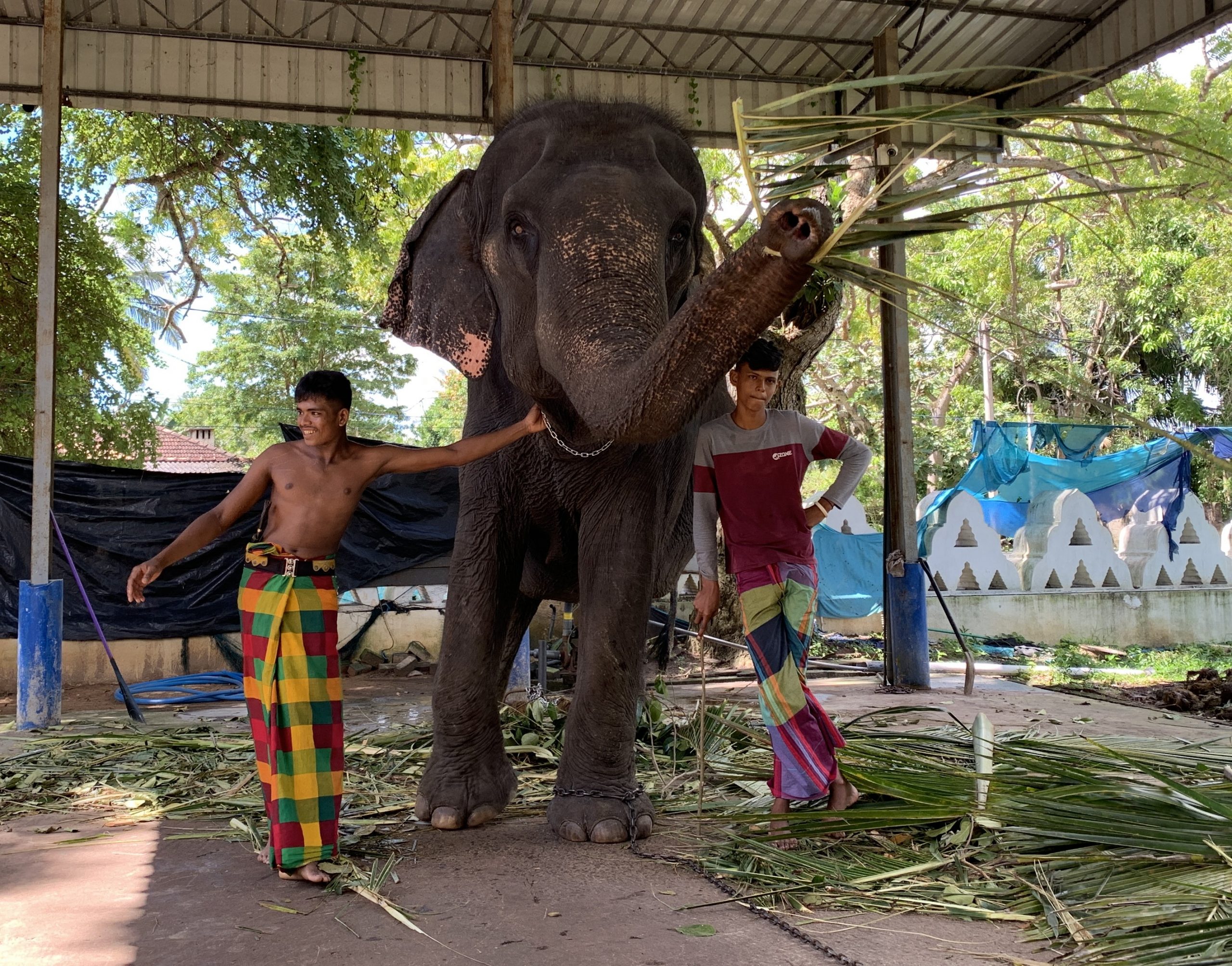
Sorry. Just had to get that off my chest. Joyous celebrations in honour of Buddha’s tooth include lots of dancing and other entertainment that probably include lots of traditions that are not strictly Buddhist. We are lucky enough to attend a show presenting the best of the traditional dances. Turn on the sound to get the full experience from the videos.
The first photo shows the dancers charmingly dressed as peacocks. They enter the stage making pecking movements. The second photo shows a dance depicting demons that are capable of causing particular ailments.

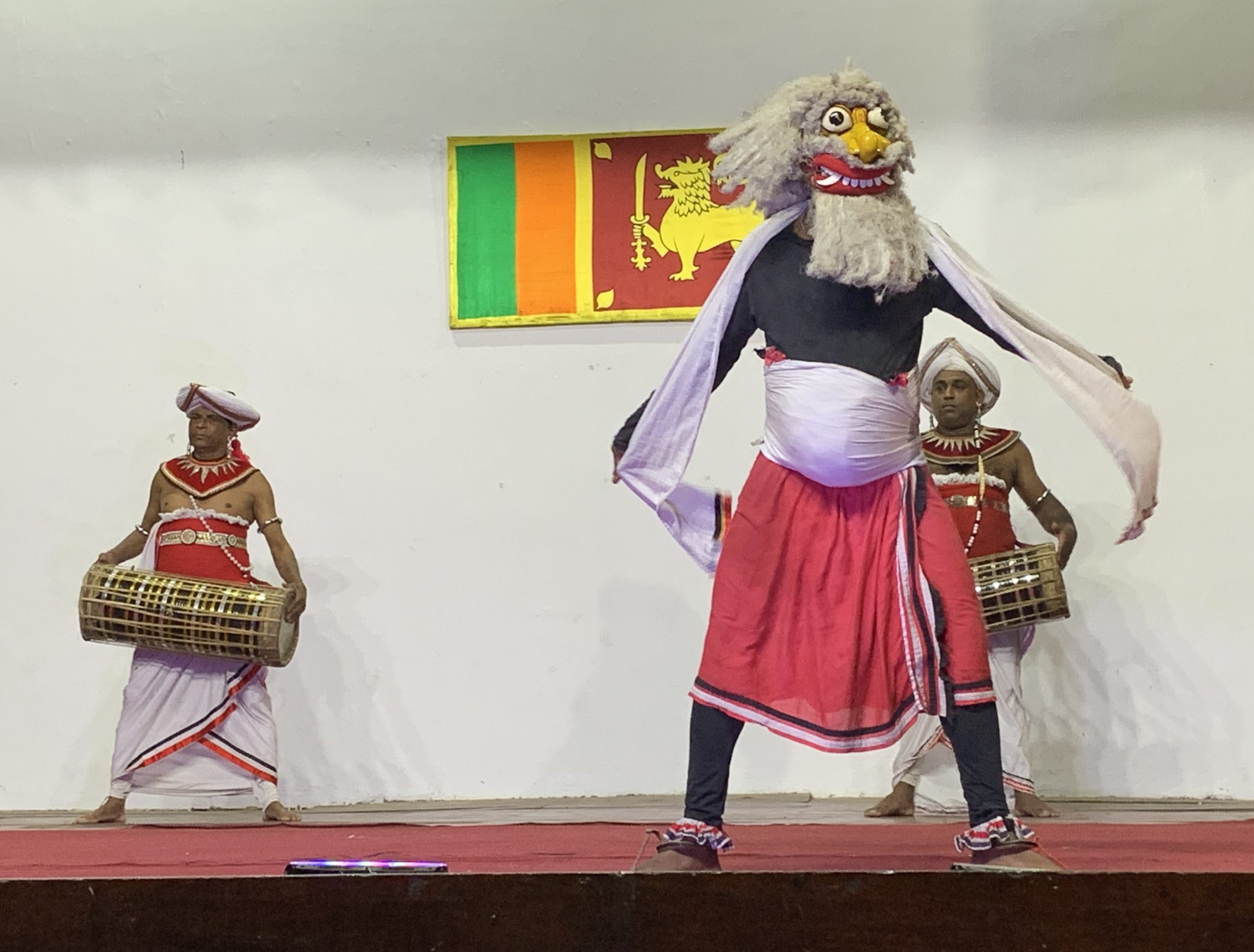
The following pictures are from the tea plucking dance:
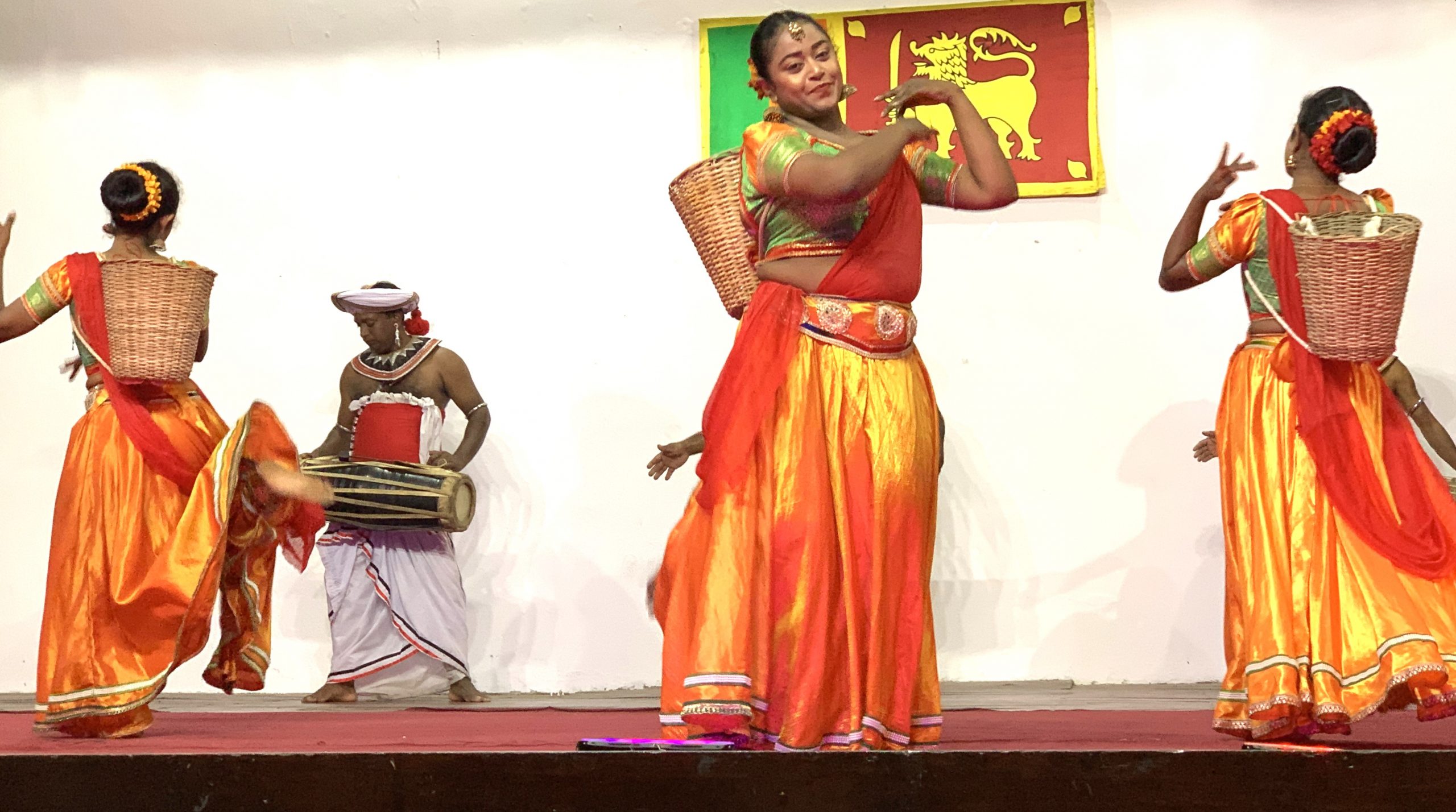
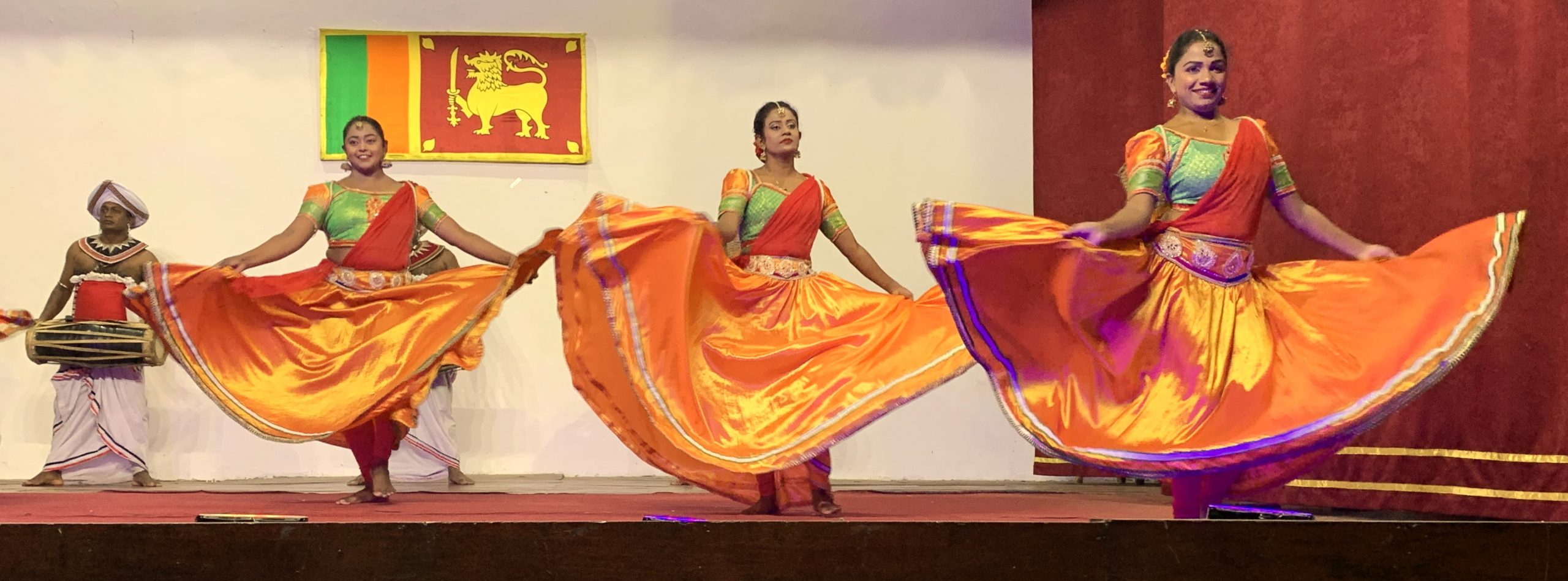
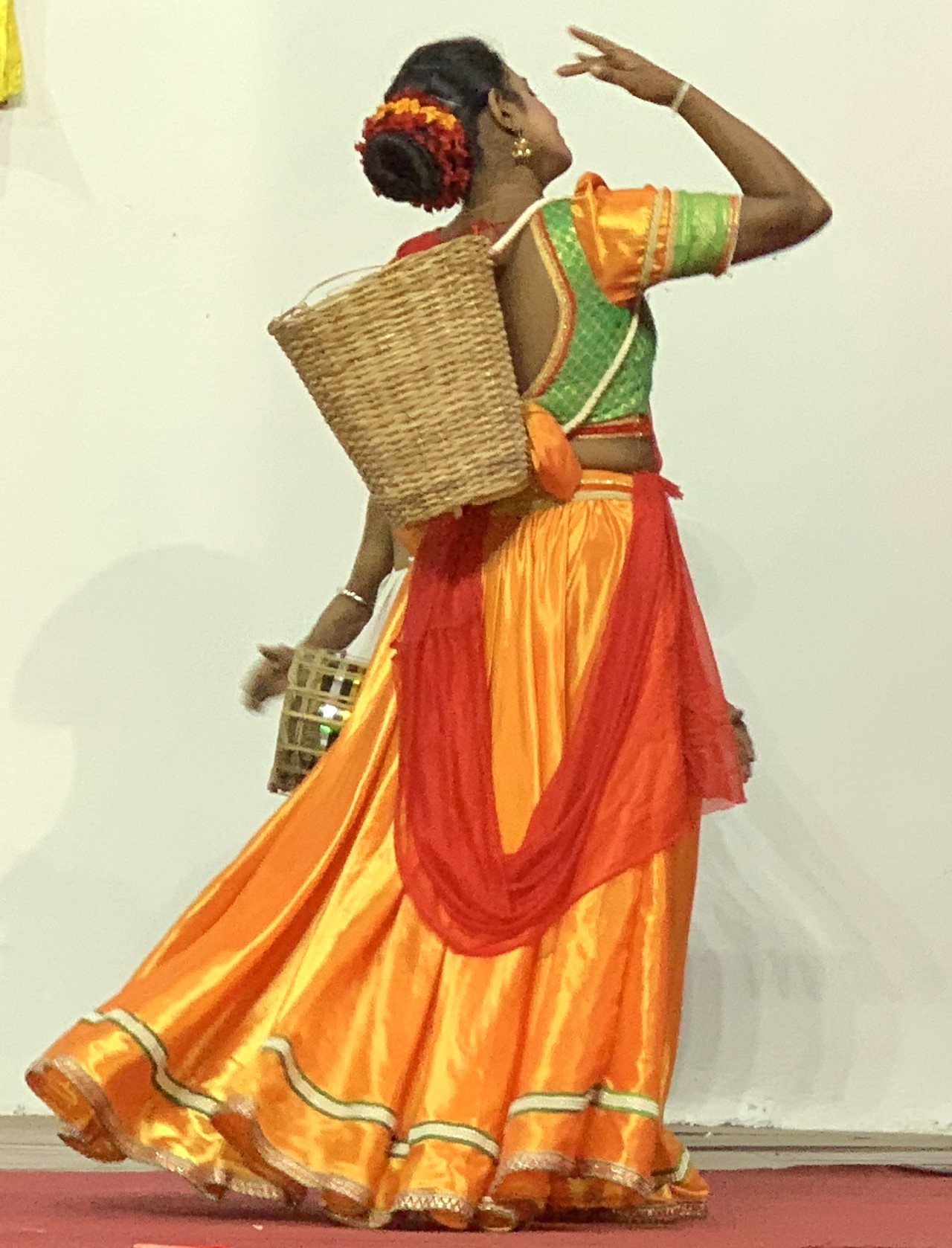
The next dance invokes the blessing of the goddess patina:
Finally, the Ves dance is an ancient dance ritual performed only by men:
After the show we watch the ritual firewalking. The trick is to pace yourself so that your feet do not touch the hot surface long enough to burn.
Many dances and rituals in Sri Lanka make use of colourful, hand-painted masks that all have some kind of symbolic meaning. Some are rather scary while others are funny. Here are a few examples from a mask museum we visited:
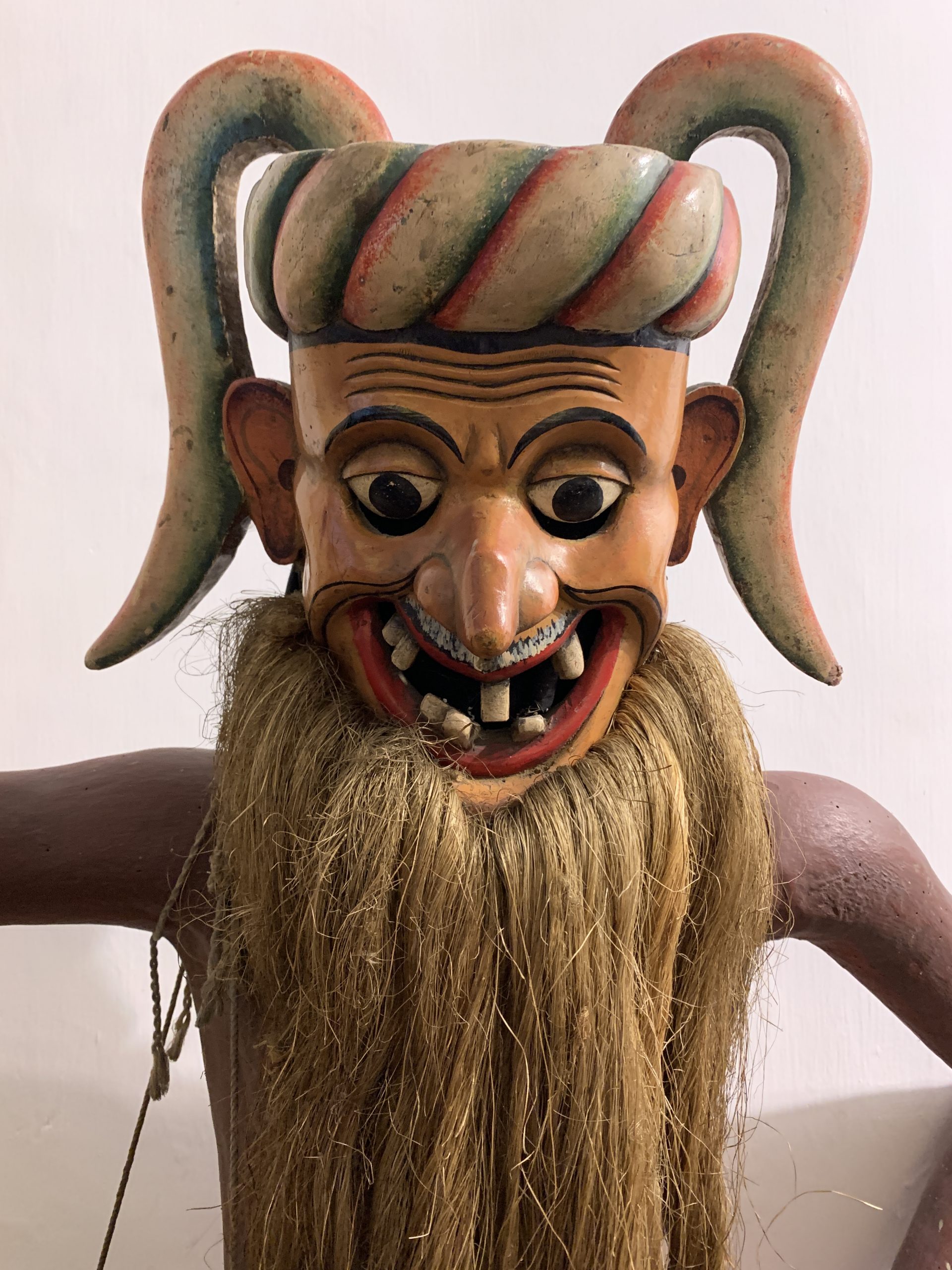
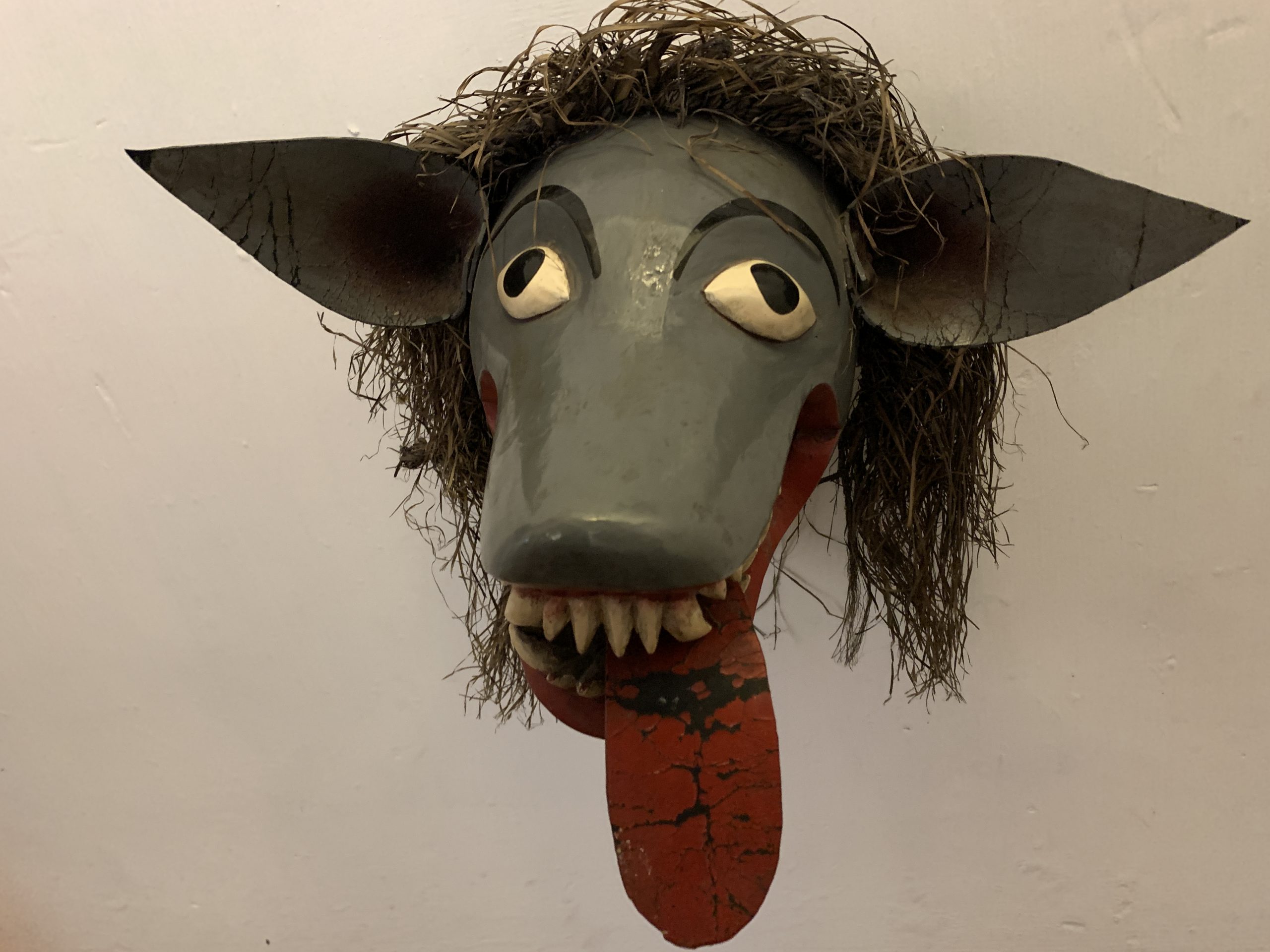
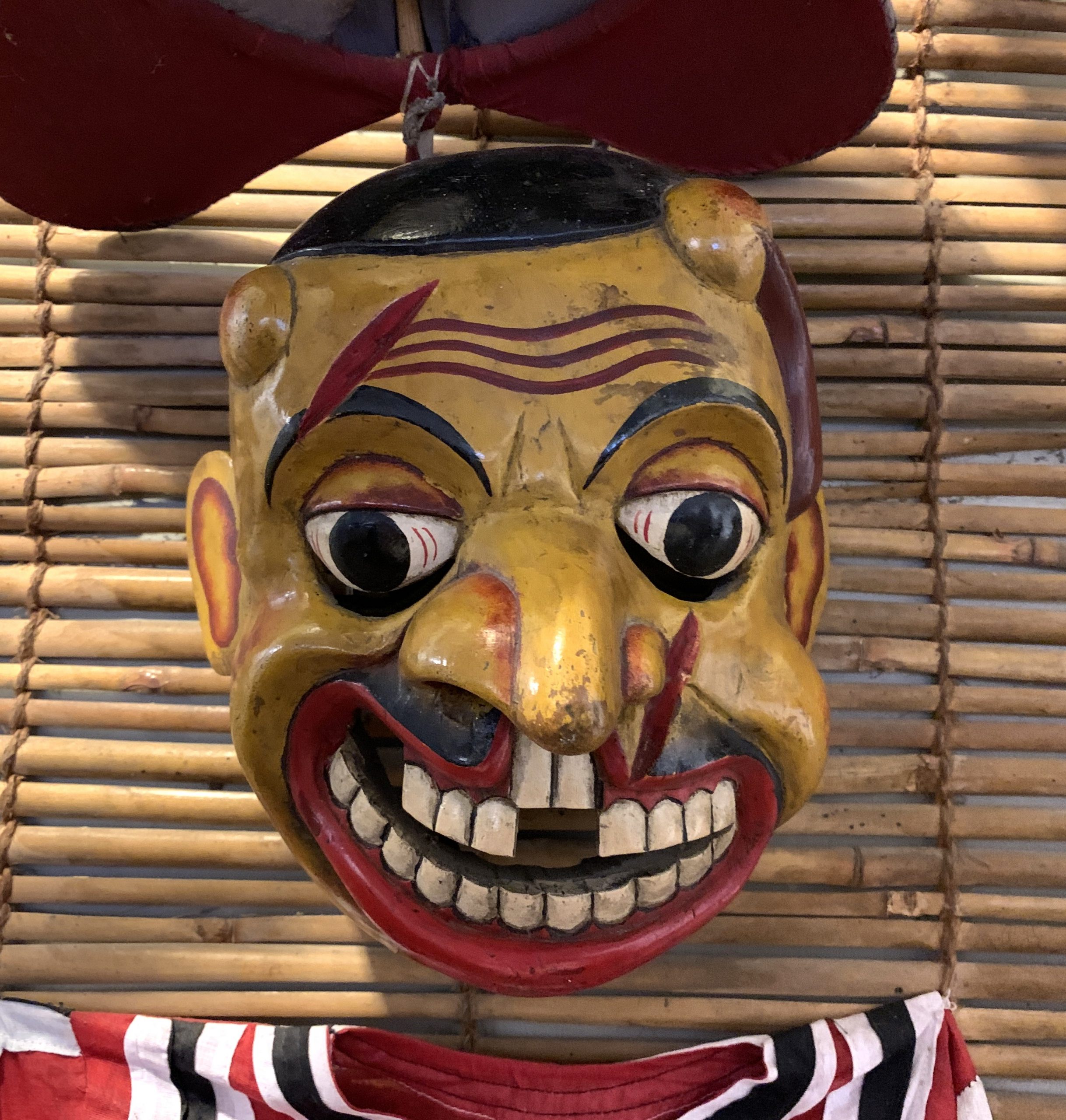
Certain masks depict demons that cause particular ailments (one demon for each ailment), while other masks depict persona that can cure particular ailments. It can be easy for the uninitiated to mix them up, but I believe the following are the ailment demon masks:


